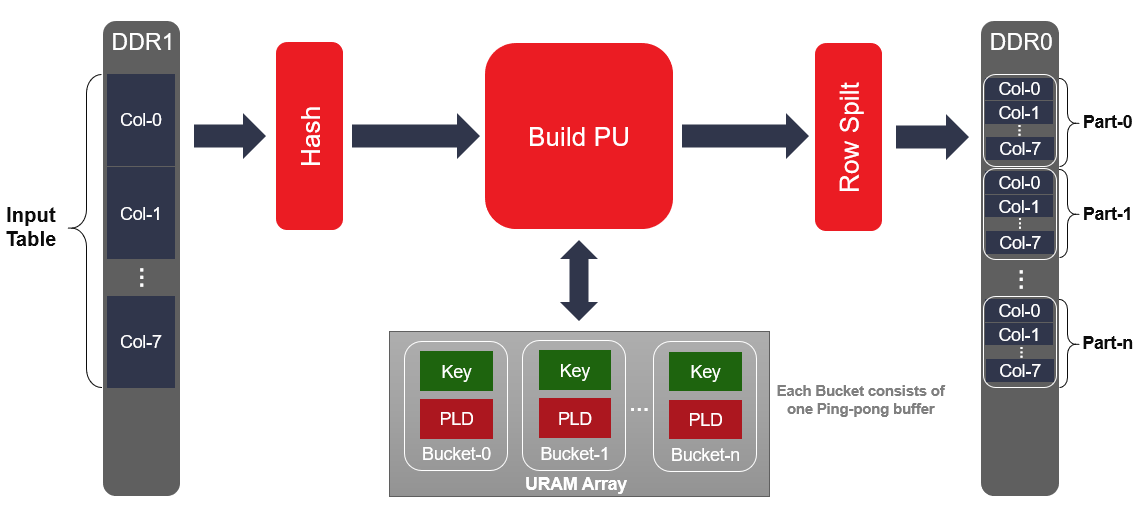Internals of Hash-Partition¶
This document describes the structure and execution of Hash-Partition, implemented as hashPartition .

The Hash-Partition primitive can distribute a giant table into multiple sub-tables. It is a multi-channel and multi-PU design to take the advantage of high memory bandwidth in Xilinx FPGA. A URAM array is built in Partition PU to temporarily store distributed data, and Ping-Pong control is set for the URAM array for higher throughput.
The details of API description is shown in hashPartition, and a typical setup of hashPartition could be:
- HASH_MODE=1
- KEYW=64
- PW=192
- EW=32
- HASHWH=0
- HASHWL=8
- ARW=18
- CHNM=1
- COL_NM=8
In the typical setup, the PU number is 1 because there are only one DDR for input and one DDR for output. The resource consumption of the setup is shown below:
- LUT: 26363
- Register: 45762
- BRAM36: 20
- URAM: 256
- DSP: 5
Important
Make sure the size of input table is smaller than the size of FPGA storage. Take care template parameters which can control the number of URAM, and make sure it can be placed in a single SLR.
Caution
Currently, this primitive only support that patition size is a power of 2, and its maximum is 256.